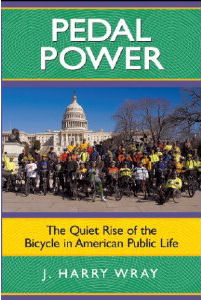I just got the August 5, 2009 San Francisco Bicycle Coalition newsletter online. It contains the news that the Paris, France bike share program has been “a huge success.” [Page deleted and notarchived, SF Bicycle coalition has erased this history, and reading on, you might get an idea why. But the newsletter also was sent as an e-mail, and I have uploaded it as a page on this blog. ]
The credit-card swipe necessary to release a bicycle from its parking station in Paris would seem to solve the problems inherent in earlier “yellow-bike” programs that simply left bicycles lying around for people to use. Such programs have repeatedly been tried by people whose idealism knows no bounds, and have failed when the bicycles disappeared.
I was initially very hopeful for the Paris bike-share program, with its more sensible business model. The program has seen wide use, to its credit, with claims of 80,000 users per day. But there have been reports of very serious problems with theft and vandalism; I’ve read that some 8,000 of the original 15,000 bicycles have had to be replaced. See for example these news items from treehugger.com and the BBC. Unfortunately, claims of “huge success” do need a reality check.
I don’t have good information about the reasons for the problems, but I can speculate:
- Perhaps the bicycles don’t have locks that secure them — or secure them well — to fixed objects other than the special racks.
- People who use these bicycles are likely not to be knowledgeable about securing a bicycle.
- Another problem could be that the bicycles all look the same, and so are hard to trace.
- And they are rather nice bicycles, with built-in lighting, fenders and geared hubs.
- There also could be a problem with credit-card theft and fraud.
- Also, as the photo with the treehugger.com story shows, bicycles are an easy target for vandalism while parked in their racks, day and night, in unsecured areas on the streets. That problem doesn’t admit of an easy solution, because widespread dispersal of the bicycles is essential to the program’s usefulness.
Much would seem to depend on the general crime rate; the prototype program in the smaller university city of Lyon is reportedly doing better.
A claim which seems credible is that JCDecaux, the advertising company which financed the program, is suffering from the current economic downturn — see the report on triplepundit.com. The economic downturn might be less of a problem except that JCDecaux didn’t set the program up to pay for itself, but rather, subsidized it in return for rights to post billboards. Shades of the yellow-bikes phenomenon, from a large, established business…though a story on Streetsblog reports that JCDecaux is overemphasizing the problem to score negotiating points, and does not release financial information which would clarify the issues.
The program is expanding, but now the City of Paris also has had to subsidize it too, according to Bike Europe. Yes, all modes of transportation are subsidized, some more than others (apologies to George Orwell), but asking for a new and different subsidy may not be popular, and especially not in today’s economic climate.
I regard the problems with the Paris bike-share program as unfortunate, but also I ask the San Francisco Bicycle Coalition and other bicycling advocacy organizations not to stick their heads, or ours, in the sand. Your credibility is at stake.


